A soft, jiggly, and chewy Japanese dessert, Matcha Warabi Mochi is a favorite that combines earthy green tea, roasted soybean flour, and a sweet brown sugar syrup (kuromitsu) drizzle. Unlike traditional mochi made from glutinous rice, this jelly-like confection has a melt-in-your-mouth texture that pairs beautifully with matcha.
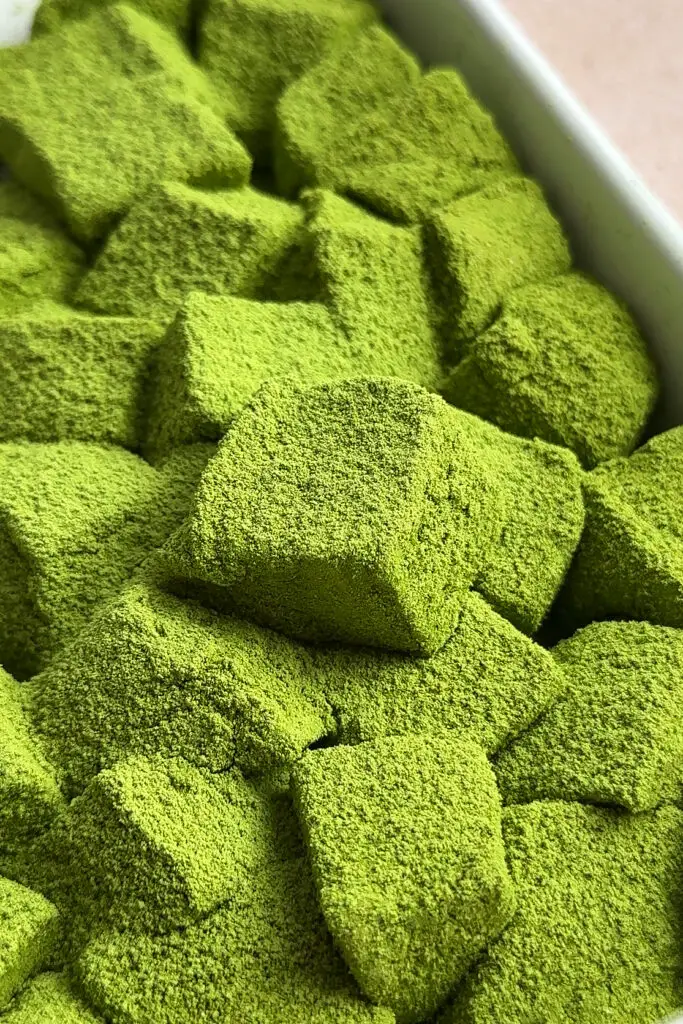
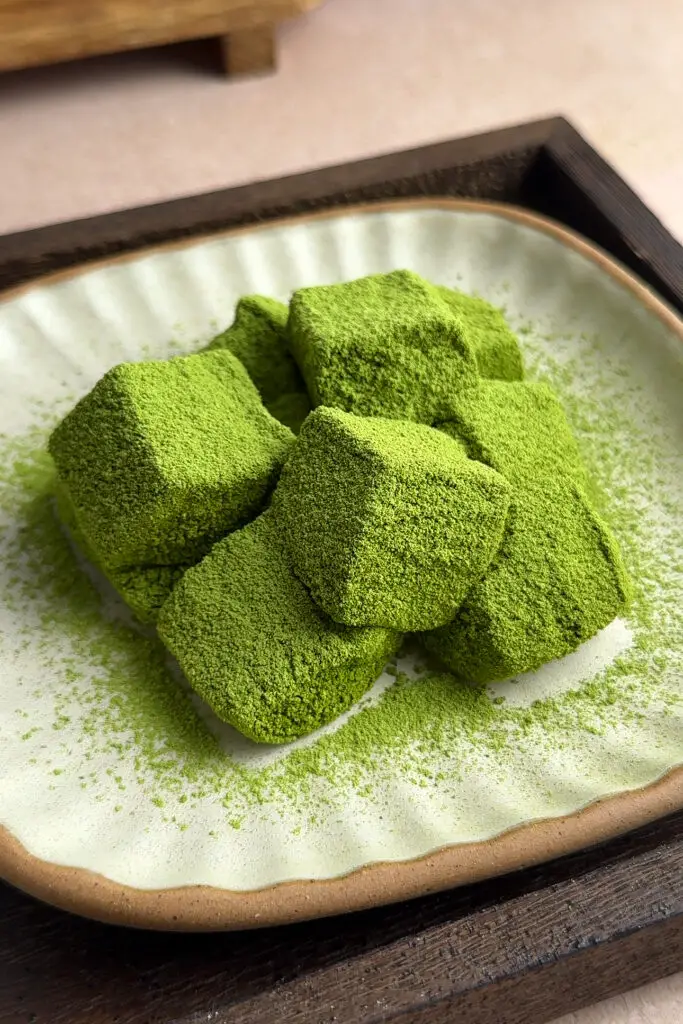
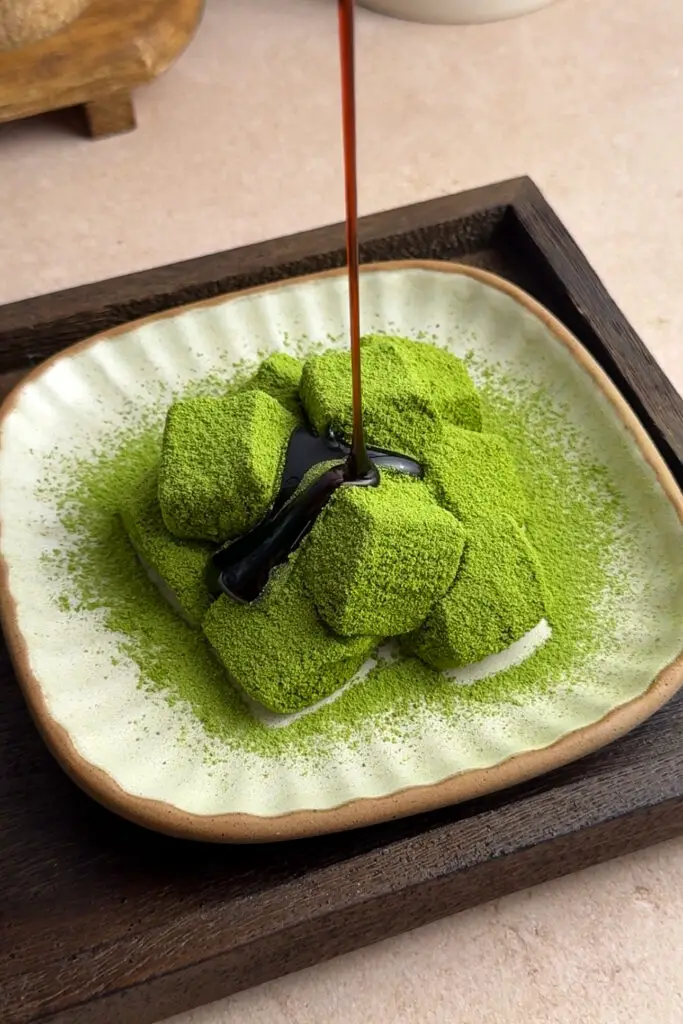
My other recipes are also really delicious! Check out the matcha cheesecake tart as well as my strawberry matcha basque cheesecake.
Jump to:
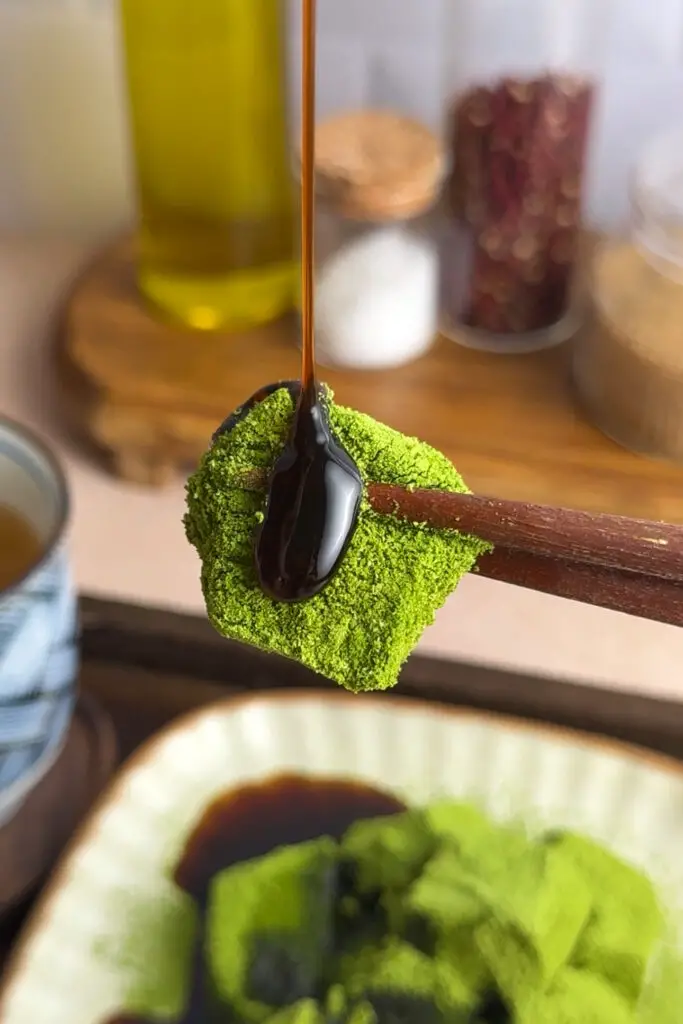
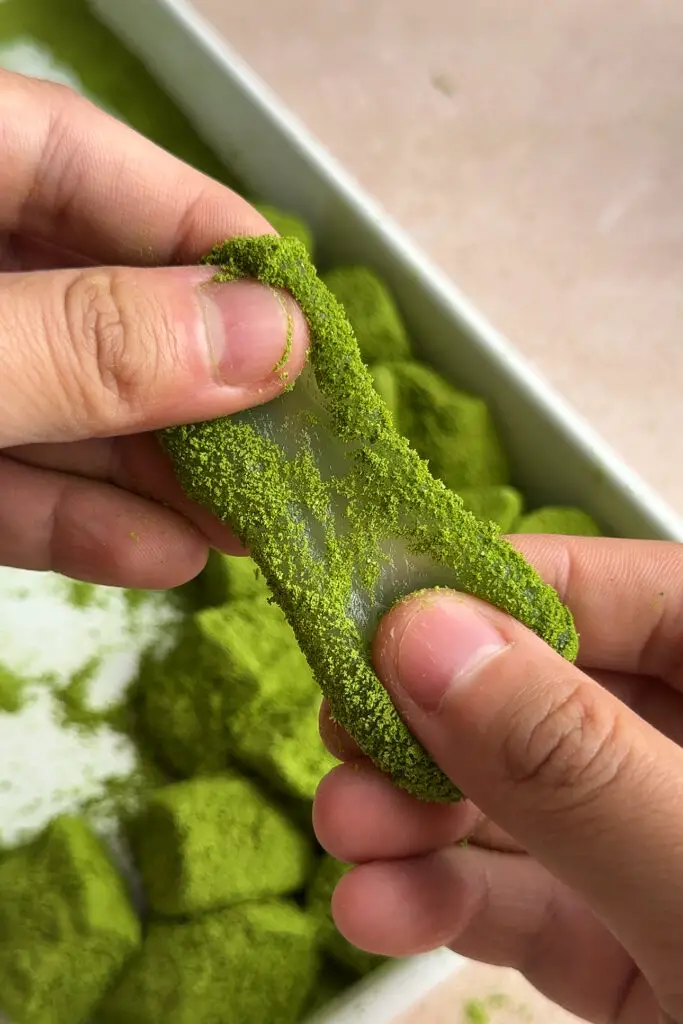
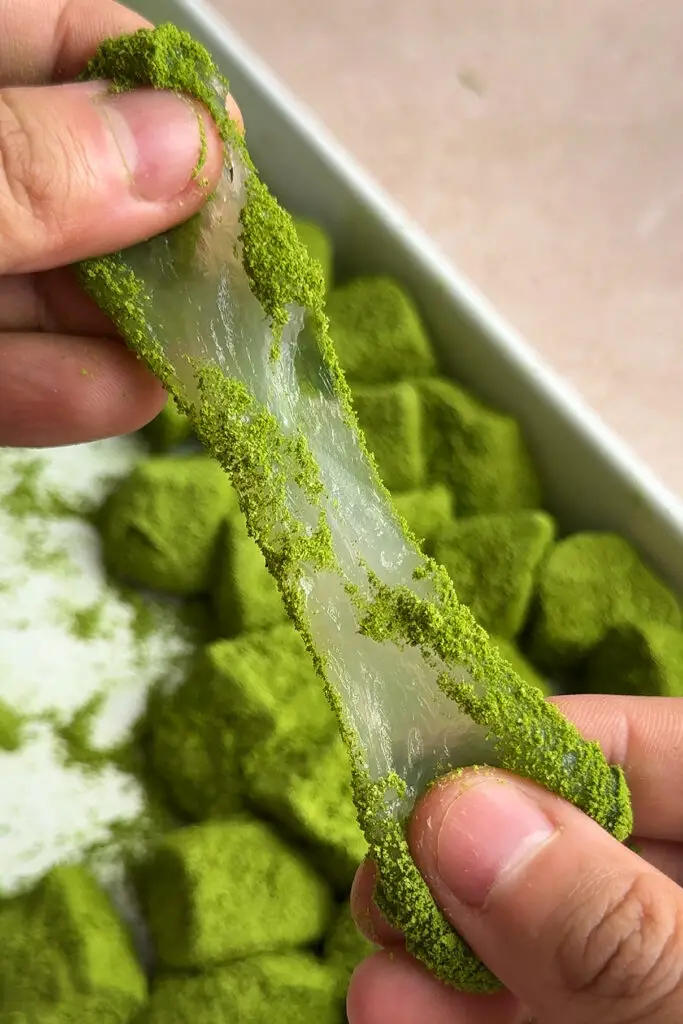
What is Warabi Mochi?
Warabi mochi (わらび餅) is a Japanese jelly-like dessert traditionally made with bracken starch. It’s especially popular in summer festivals and often served chilled, dusted with kinako, and paired with syrup. Unlike regular mochi, which is sticky and stretchy, warabi mochi is soft, bouncy, and almost melts on the tongue.
Regular Mochi vs Warabi Mochi
- Regular Mochi – Made from glutinous rice flour (shiratamako or mochiko), steamed, and pounded into a dense, chewy dough.
- Warabi Mochi – Made with bracken starch or alternatives like tapioca starch, resulting in a translucent, tender texture closer to jelly than rice cake.
Warabi Bracken Starch vs Tapioca Starch
Traditionally, bracken root starch is used to create authentic warabi mochi. However, pure bracken starch is rare and expensive. Tapioca starch makes an excellent substitute because it offers a similar clear, chewy consistency. While the flavor may differ slightly, tapioca starch keeps the dessert accessible and affordable.
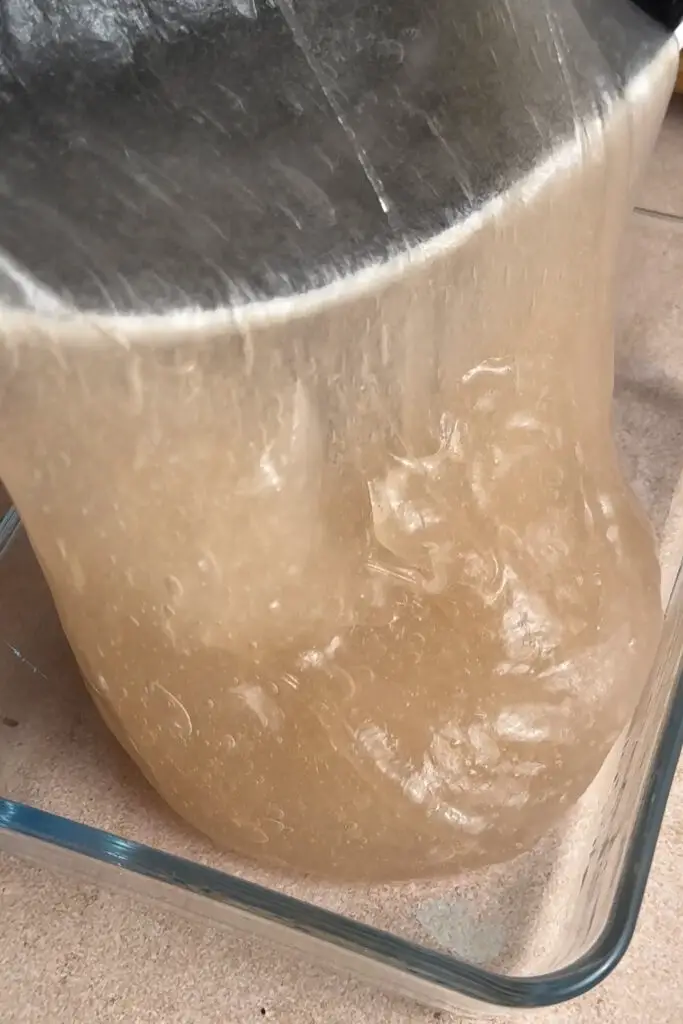
🍵What is Matcha?
Matcha is a Japanese finely ground green tea powder. I'll be honest, it's expensive! However, when it comes to baking, don't get too caught up in quality. I use the cheapest culinary grade matcha that I can get my hands on. Feel free to add more or less depending on your preference. There are different types of matcha:
1. Ceremonial-Grade Matcha
Purpose: Best for traditional tea preparation and drinking on its own.
Flavor: Smooth, umami-rich, with minimal bitterness.
Color: Vibrant, bright green.
Texture: Silky and fine, dissolves well in water.
Uses: Drinking as a hot or iced tea, whisked with water.
Features: Made from the youngest, tenderest tea leaves, often handpicked and stone-ground.
2. Culinary-Grade Matcha
Purpose: Designed for cooking and baking.
Flavor: Stronger and slightly more astringent than ceremonial-grade.
Color: Slightly darker green with less vibrancy.
Texture: Fine but less delicate than ceremonial-grade.
Uses: Incorporating into lattes, smoothies, desserts (like your matcha cheesecake tart), and savory dishes.
Features: A more affordable option made from slightly older tea leaves.
3. Premium-Grade Matcha
Purpose: A versatile middle ground between ceremonial and culinary-grade matcha.
Uses: Drinking (especially in lattes) or high-quality recipes that highlight matcha.
Flavor: Balanced with a hint of sweetness and some bitterness.
Color: Bright green, though not as vivid as ceremonial-grade.
Texture: Fine, dissolves well, suitable for both drinking and cooking.
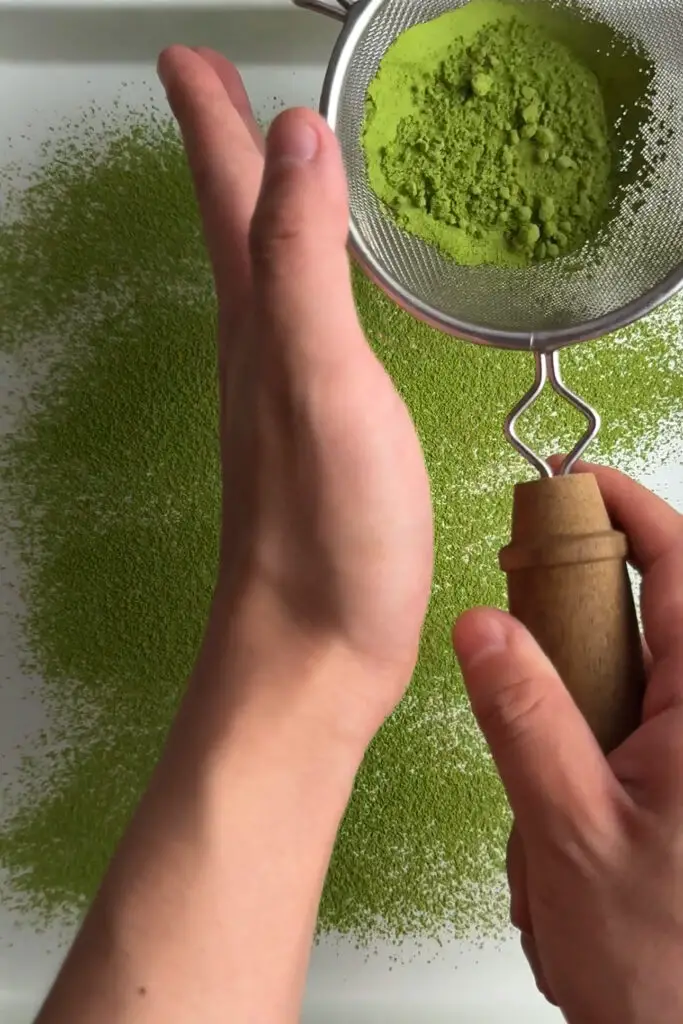
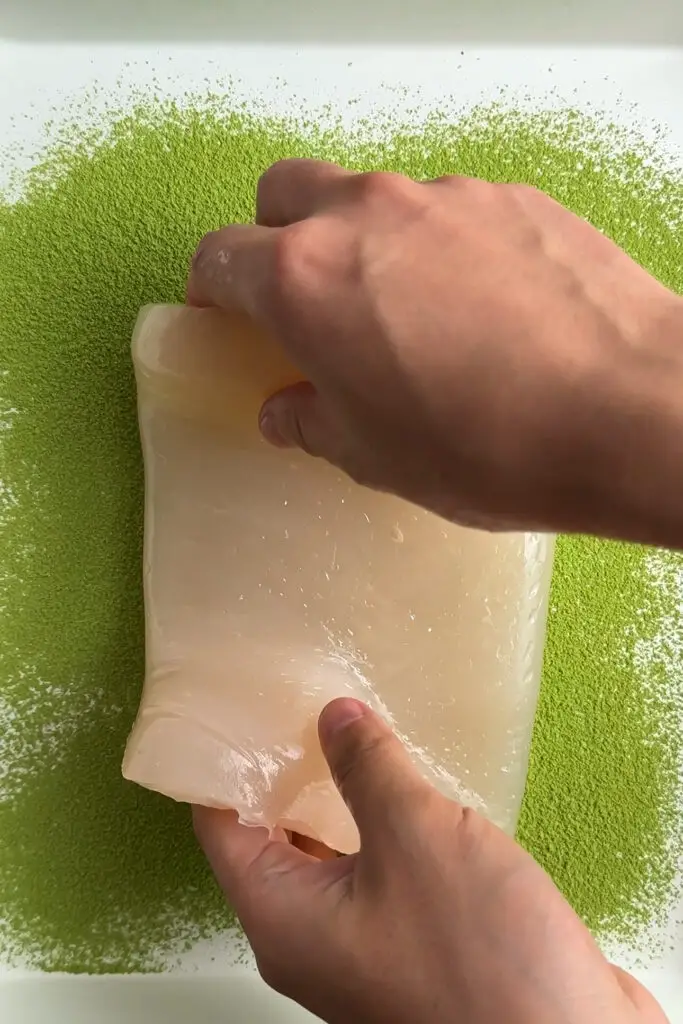
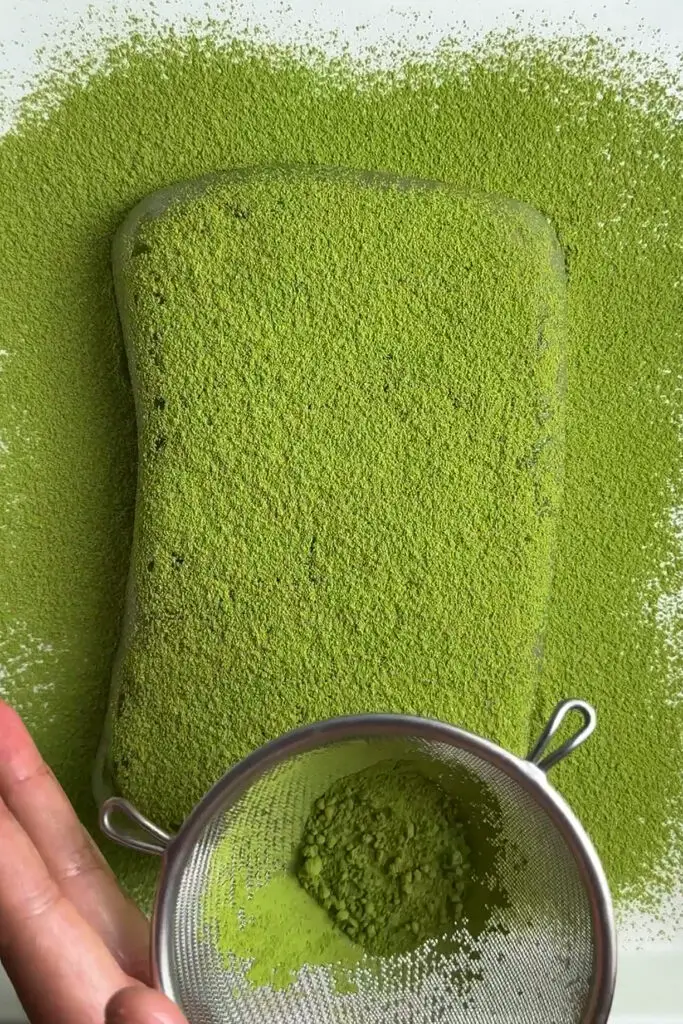
What Is Kinako Powder?
Kinako is roasted soybean flour commonly used in Japanese sweets. It has a nutty, toasty flavor that balances perfectly with sweet syrups and earthy matcha. Think of it as the Japanese equivalent of almond flour, but with a deeper roasted aroma. In Korea, this is also known as injeolmi powder.
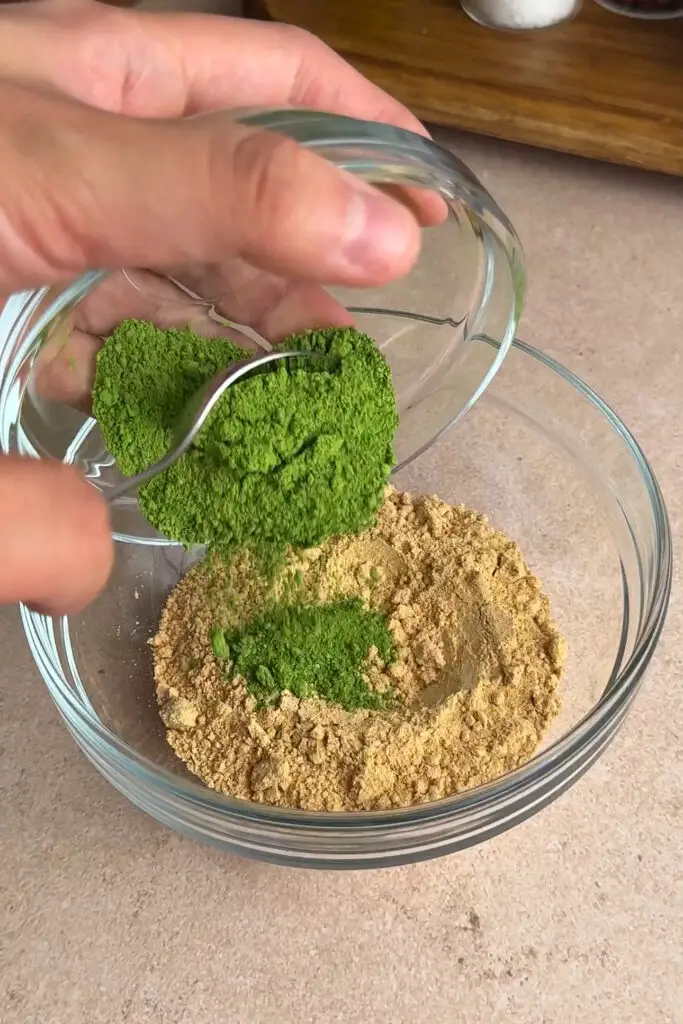
🥣Ingredients
- Tapioca starch – A gluten-free starch that creates the jelly-like base for the mochi.
- Sugar – Adds subtle sweetness and balances the earthy notes of matcha and kinako.
- Water – Essential for hydrating the starch and forming the mochi’s texture.
- Brown sugar – Dark brown sugar is ideal for making kuromitsu syrup, offering rich caramel-like flavor.
- Kinako powder – Roasted soybean flour with nutty, aromatic depth.
- Matcha powder – Finely ground green tea, vibrant in color and full of antioxidants.
- Powdered sugar – Lightly sweetens the dusting mix without overpowering the matcha.
See recipe card for quantities.
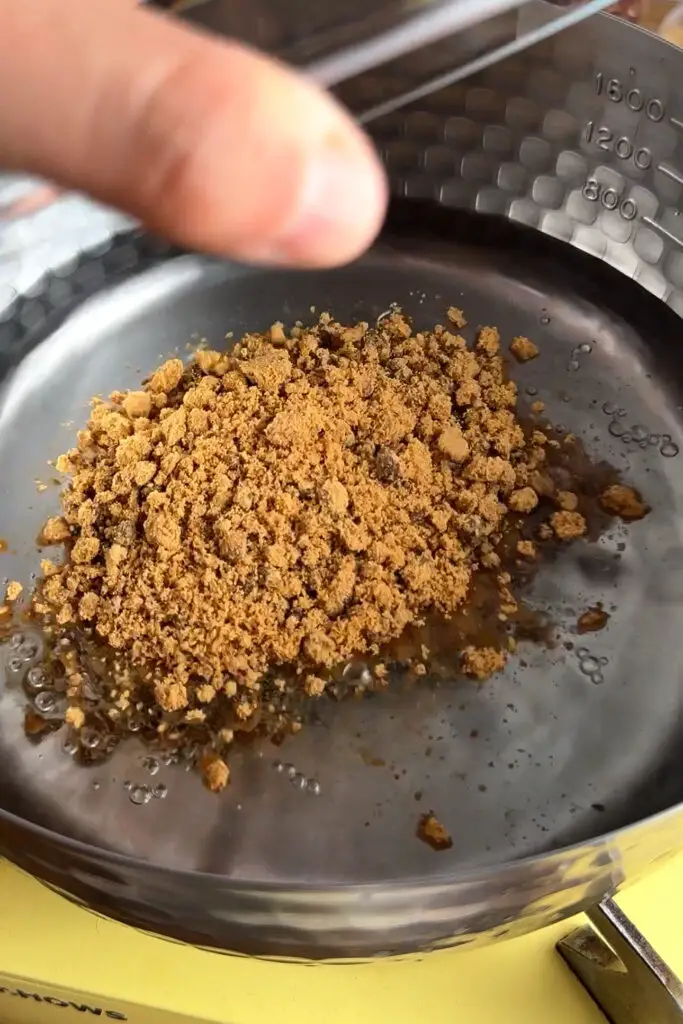
📖Instructions
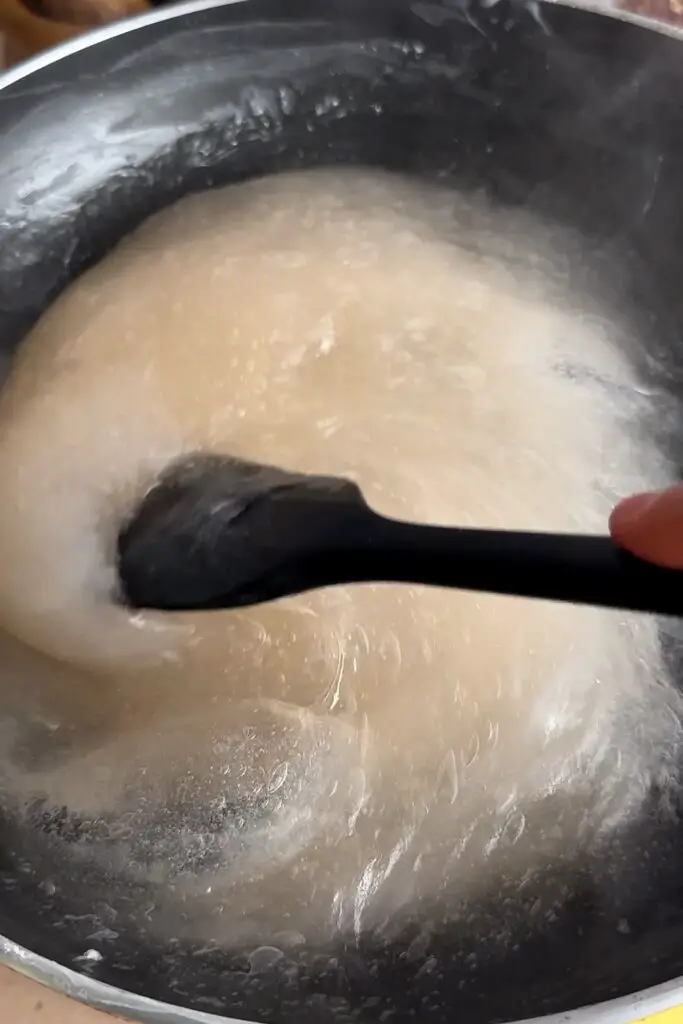
Step 1:
Cook the mochi base – In a pot, whisk together tapioca starch, sugar, and water until smooth. Cook on low-medium heat, stirring constantly, until the mixture thickens and turns translucent (about 10 minutes).

Step 2:
Set the mochi – Pour the mixture into a lightly oiled pan, refrigerate for 3 hours or overnight.
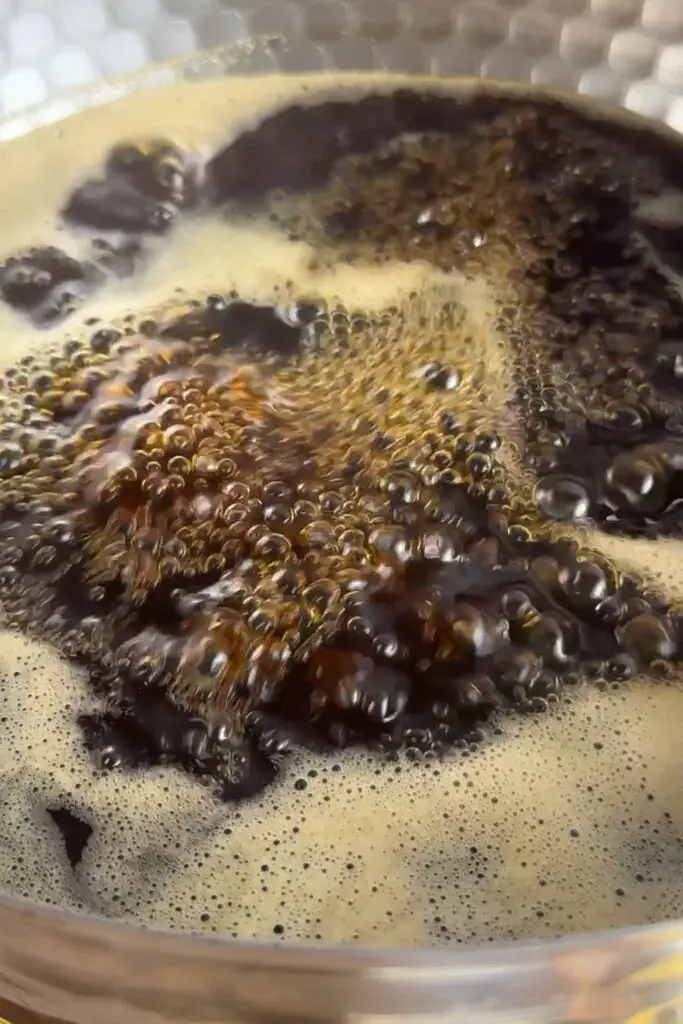
Step 3:
Make the kuromitsu syrup – Simmer brown sugar and water in a saucepan until it thickens enough to coat a spoon. Chill.

Step 4:
Matcha-kinako mix – In a bowl, mix kinako, matcha, and powdered sugar.
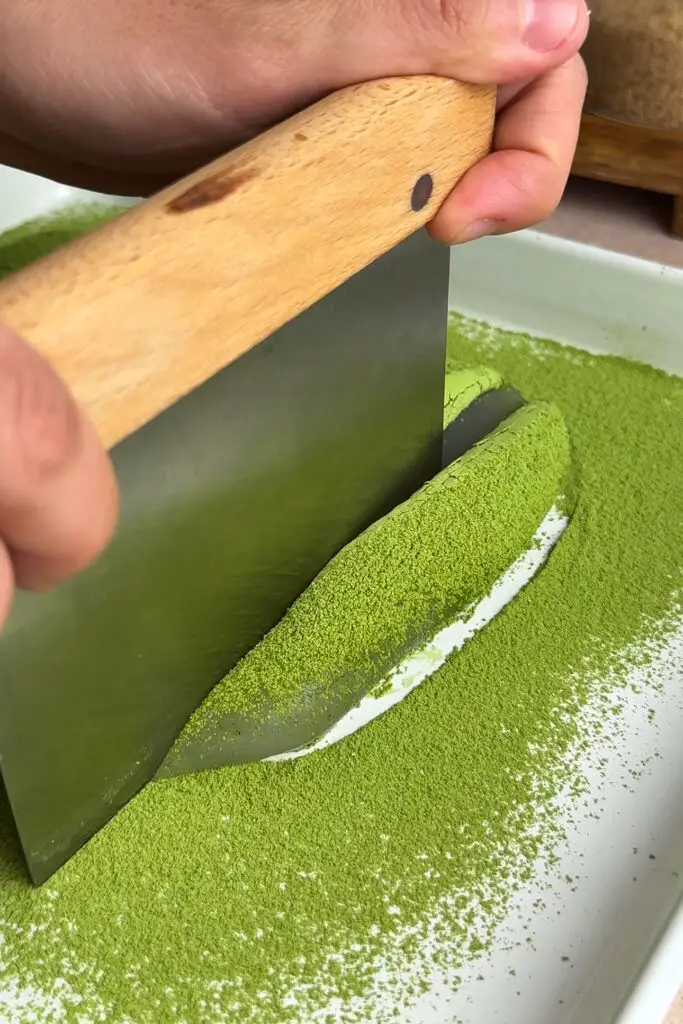
Step 5:
Cut the mochi – Dust some onto a board, place the chilled mochi on top, dust more, and cut into cubes. Roll cubes in extra powder.

Step 6:
Serve – Plate the cubes and drizzle with kuromitsu syrup. Enjoy chilled!
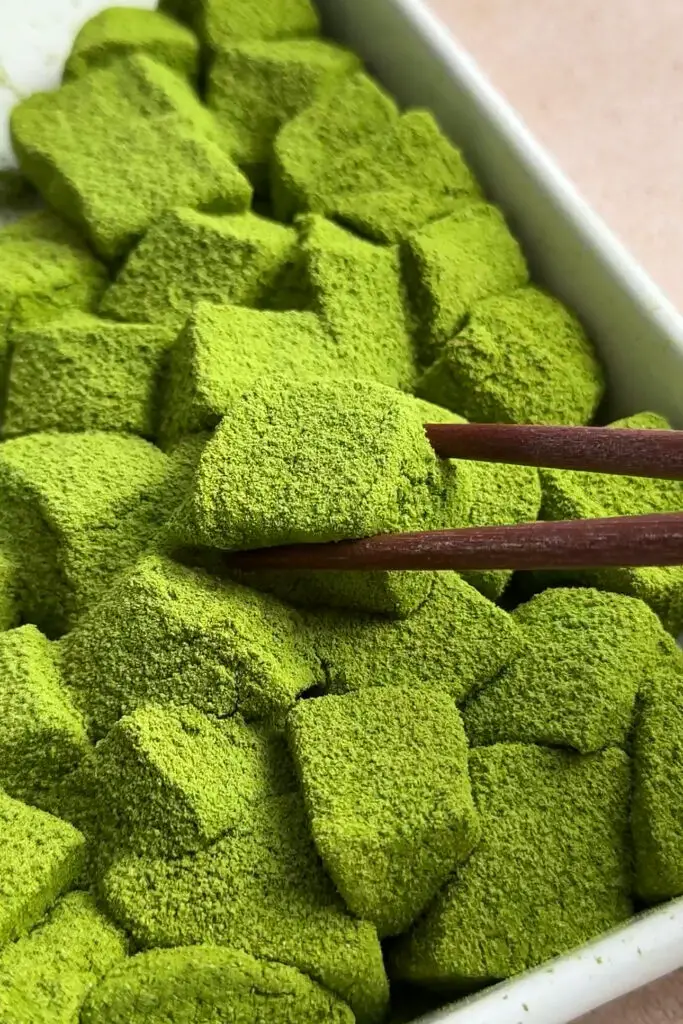
Hint: make sure to grease the pan you pour the mochi in. Once set, you can use clean hands to pull the edges away from the pan. It should release quite easily!
Substitutions and Variations
- Starch – Bracken starch is traditional but tapioca starch works too.
- Sweetener – Use honey, maple syrup, or white sugar if you don’t have brown sugar.
- Kinako – you can use black sesame powder mixed with a bit of powdered sugar. Also delicious!
- Matcha-free version – Use only kinako and sugar for a classic golden warabi mochi. Hojicha powder would also be delicious.
- Cocoa kinako – Mix cocoa powder into the dusting blend for a chocolate twist.
Equipment
You do need some equipment for this recipe.
- Saucepan (for cooking the mochi base and syrup)
- Rubber spatula (for stirring thick mixtures)
- Mixing bowls (for powders and syrup)
- Baking dish or pan (for setting the mochi)
- Sharp knife or bench-scraper (for cutting into cubes)
Storage
Warabi mochi is best enjoyed the same day for peak softness. If storing, keep in an airtight container in the refrigerator for up to 2 days. Dust with extra kinako-matcha mix before serving as refrigeration may cause moisture.
Top Tip
Always stir the mochi mixture constantly while cooking. This prevents lumps and ensures the smooth, translucent jelly-like texture that makes warabi mochi so unique. Clean-up can be tricky, I like to use a nonstick pan which helps. Once you pour out the mochi, heat the pan over medium heat until the remaining mochi residue dries out and gets crisp. You can then remove it more easily.
FAQ
A: No, freezing changes the texture and makes it unpleasantly hard.
A: Yes, when made with tapioca starch or authentic bracken starch, it’s naturally gluten-free.
A: Absolutely! Reduce the sugar in the mochi base or skip the powdered sugar in the dusting mix. Although the matcha is already quite bitter, so I wouldn't recommend this. Just pour less syrup on top!
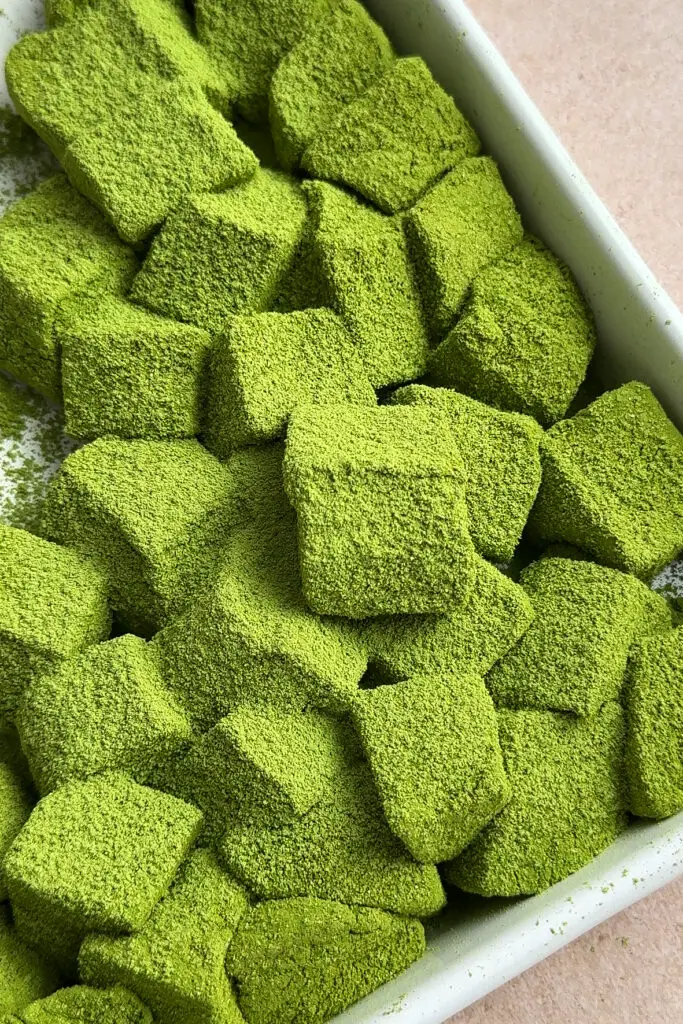
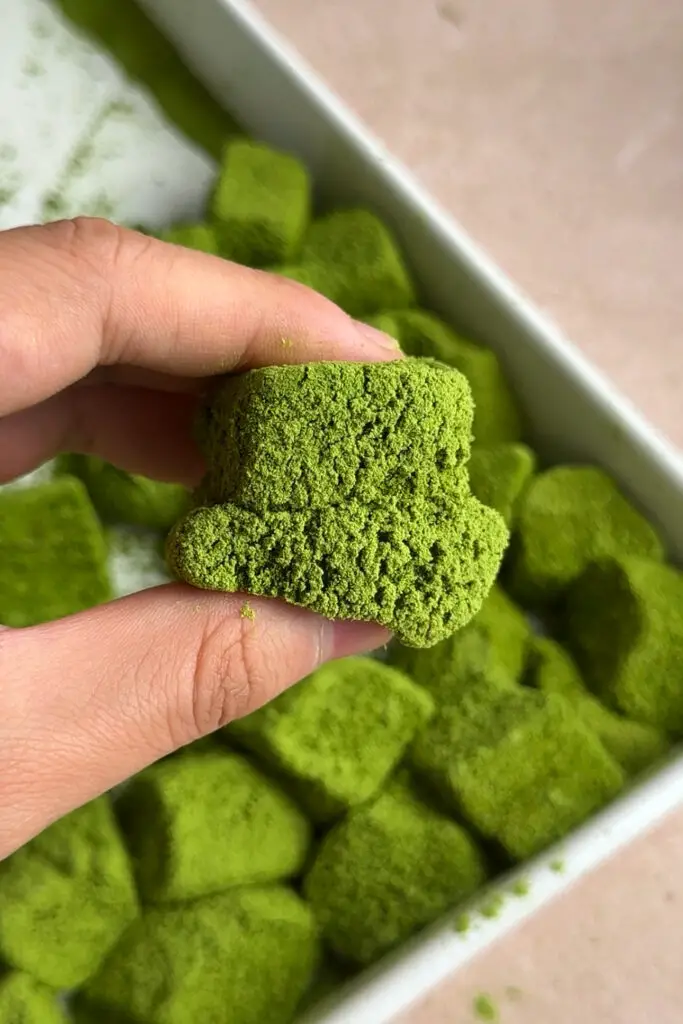
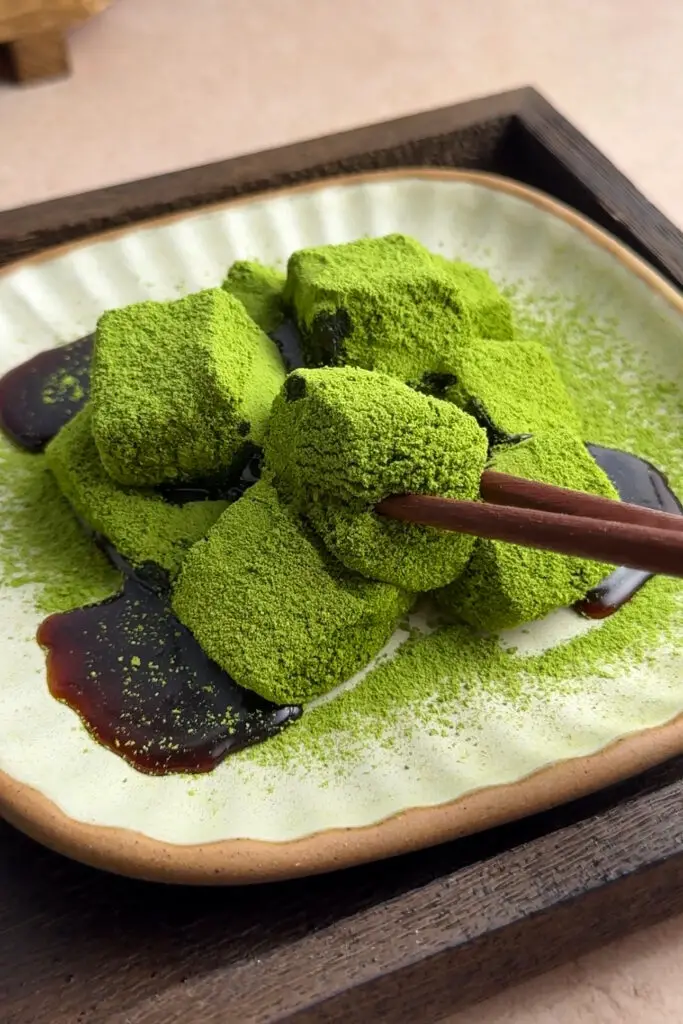
Matcha Warabi Mochi
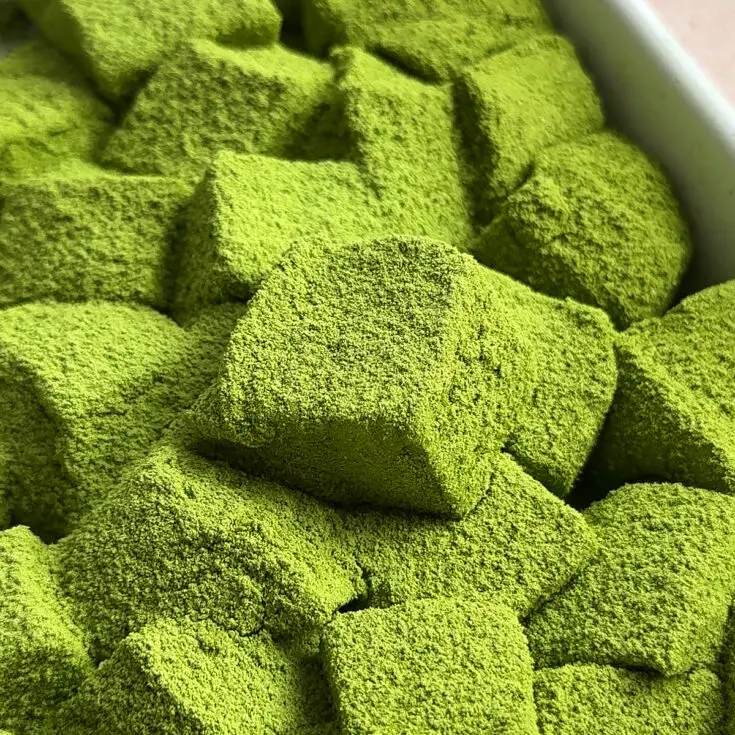
Soft, jiggly, and chewy Matcha Warabi Mochi drizzled with brown sugar kuromitsu syrup. Easy to make and this recipe uses tapioca starch.
Ingredients
MOCHI
- 100g tapioca starch
- 45g sugar (3 tbsp)
- 450g water
KUROMITSU BROWN SUGAR SYRUP
- 45g brown sugar (dark preferred)
- 120g water
DUSTING POWDER
- Kinako/Injeolmi/roasted soybean powder (~30g)
- 8g matcha powder
- 8g powdered sugar
Instructions
- Add all mochi ingredients to a pot. Mix thoroughly with a rubber spatula to ensure no lumps. Stir constantly over low-medium heat. The mixture will start to thicken. Continue stirring until the mixture turns translucent/semi-clear (~10min).
- Pour mochi into a lightly oiled pan (I'm using a glass dish that is roughly 14x18cm), cover and refrigerate around 3 hours or overnight.
- To make the kuromitsu syrup, add brown sugar and water to a small saucepan. Simmer until thickened and able to coat the back of a spoon, allow to cool in the fridge.
- Once mochi has set, in a small bowl mix together kinako powder, matcha, and powdered sugar. Sift some of the mixture onto a cutting board or pan. Gently remove the mochi and place on top of the powder. Dust more powder on top and cut mochi into cubes. Finally, roll in more powder.
- Serve with a light drizzle of brown sugar syrup and enjoy!


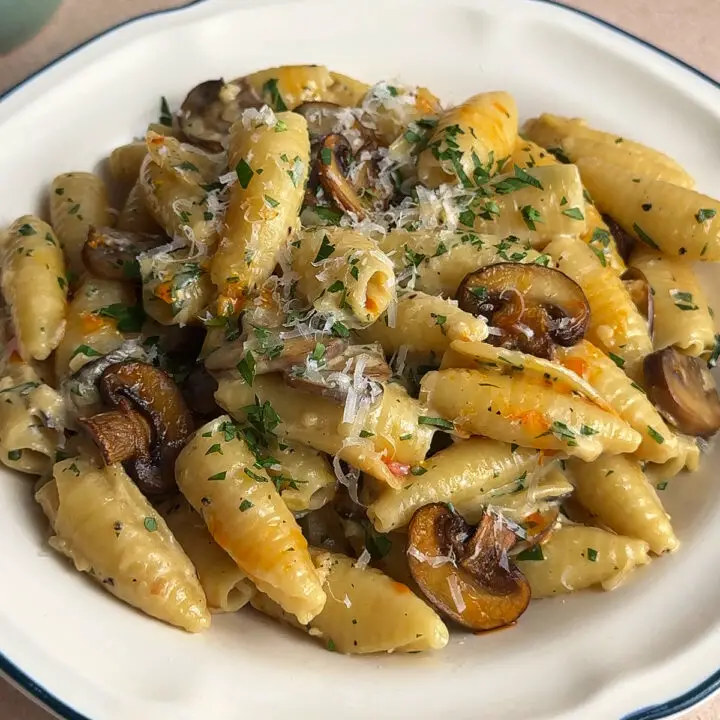
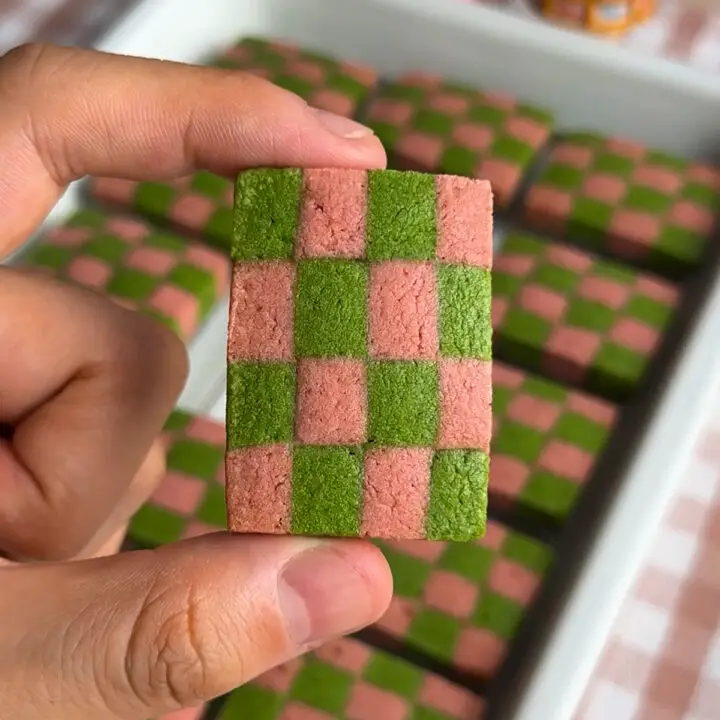
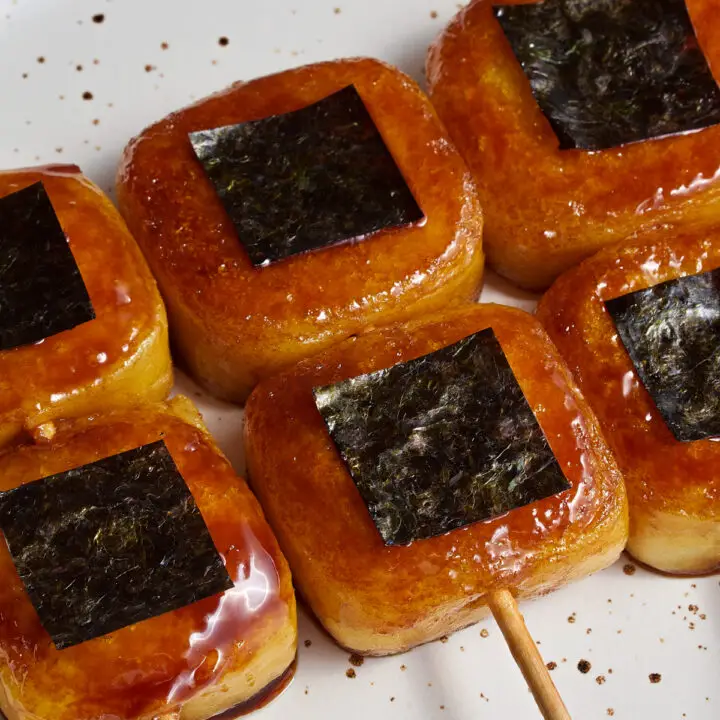
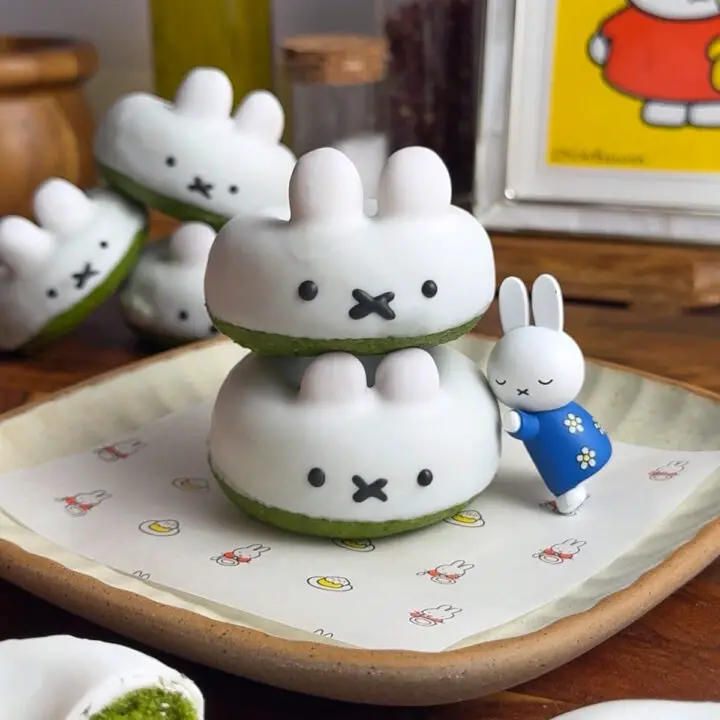
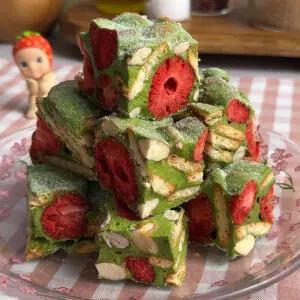
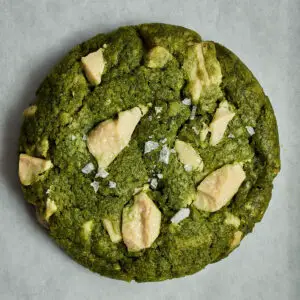
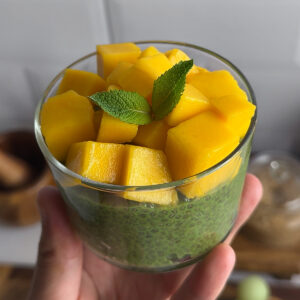
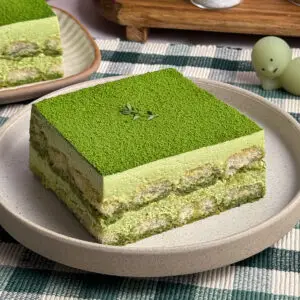
Comments
No Comments